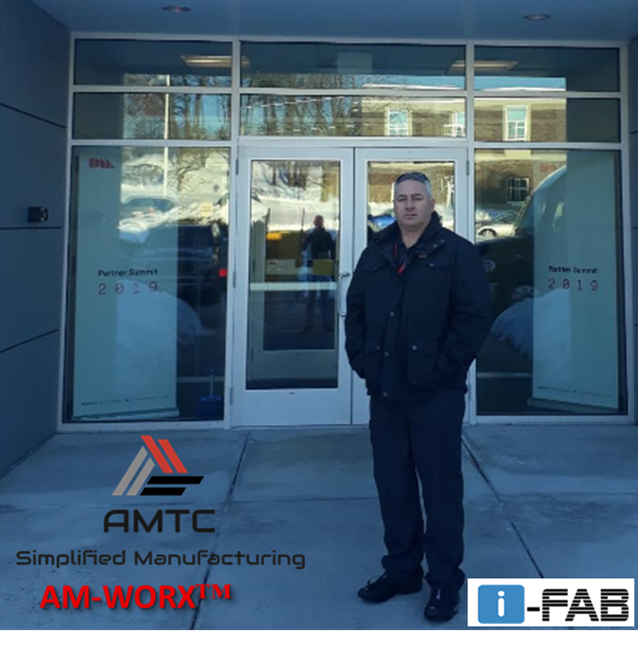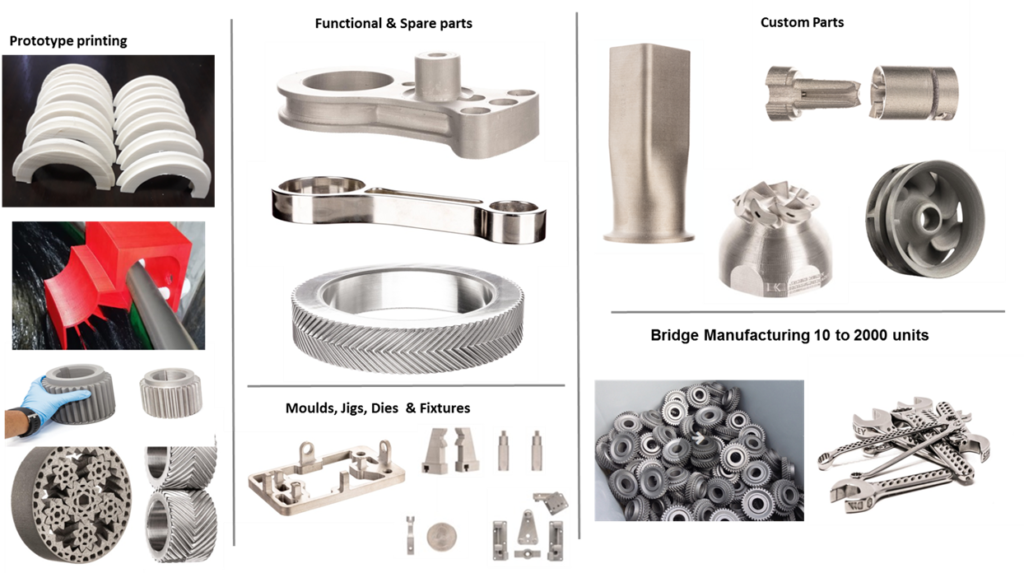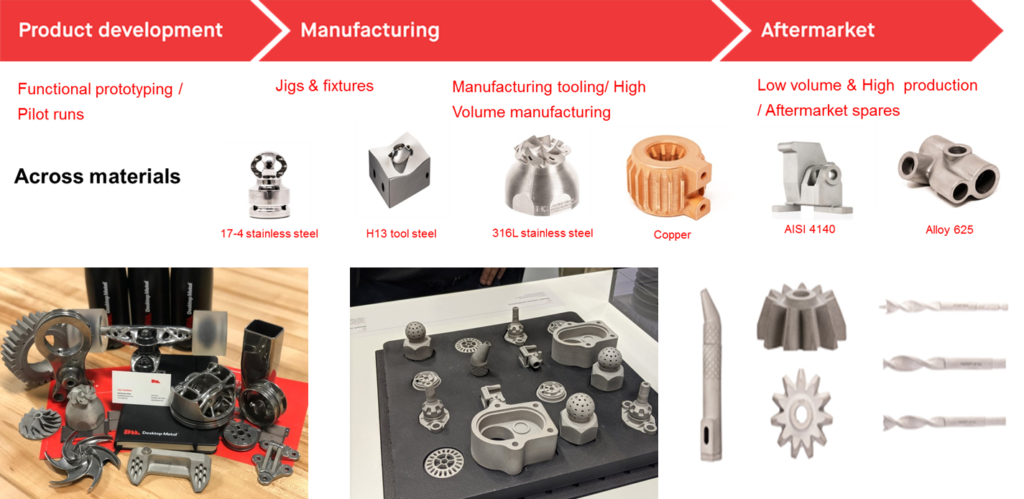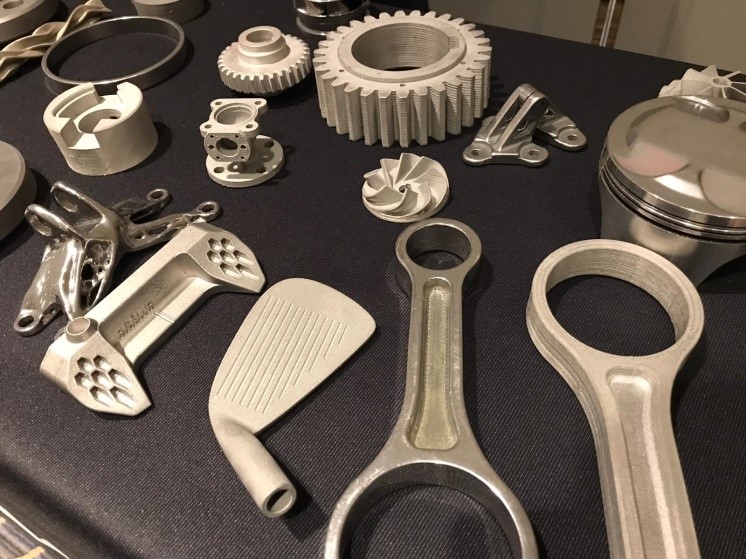Managing Director and Founder of AMTC, Roscher Van Tonder takes us through an interesting topic on Simplified Manufacturing in 3D Printing and Additive Manufacturing. Currently based and operating in South Africa, Roscher is actively involved in the sector through consulting and printing as a service.
What is it that you do?
The manufacturing world is changing and it is daunting to many companies out there, the rise of I4.0 has a lot of people unsure of what the correct direction is for the business relating to AM.
AMTC Pty Ltd goal is to supply a unique set of systems, strategies, additive manufacturing equipment, and materials to our customers and to cater for a wide range of industries ranging from, Aerospace, Automotive, Manufacturing industry, Mining, Oil & Gas, Metal Casting to the Defence industries.
Our scope is to assist companies to adopt AM by creating successful business cases with exceptional ROI. These business cases complement the current business workflow. We look at the business as a whole and we identify the core areas where the maximum benefit will be reached by implementing AM for sustainable successes.
AM-WorX addresses all the business areas to ensure total coverage and ensures maximum benefit to the bottom line.
The main stages of AM-WorX
- An onsite audit (Gauge potential AMT scope)
- Business readiness analyst (Current and lacking AM Experience/Gaps/Skills )
- Market review ( current and potential new markets and opportunities)
- Parts/Product review (Ascertain the printability of the product/parts)
- Develop the new processes and skill framework for AMT integration
By aligning with some of the bleeding edge technology companies out there the result is a business case that shows a minimum potential revenue increase compared to current company revenue over the planning horizon by showing the 10x Value guarantee by unlockable the value of AMT in the business.
Can you also explain the Simplified Manufacturing line of thought concerning 3D printing and Additive Manufacturing?
Our slogan “simplified manufacturing” comes from the benefits that technology brings to the table.
Time Reduction of the new product to market.
Additive Manufacturing has been seen as an R&D tool, the last 2 years the change to the final product has taken shape. The company that gets the product out into the market the fastest has the leverage, the technology typically cuts these times by 40-60%.
Customization & Mass customization
The instant gratification culture created by online stores and the internet is spilling over to the manufacturing industry. The ability of a company to leverage mass customization will give them an advantage on their competition, Additive manufacturing is allowing companies to move away from minimum batch volumes and give the freedom to offer customized products on-demand as per customer preference in a short amount of time.
On Demand Manufacturing
One of the biggest benefits of Additive Manufacturing is that it enables on-demand manufacturing. The ability to manufacture parts at the point of need points to a shift from “make-to-stock” to a more sustainable “make-to-order” model for low-volume production of spare parts.
Lead Time reduction
Hydroforming is primarily used for low volume forming of sheet metal parts while thermoforming is mainly used for high volume forming of plastic sheets. The tooling used in these processes is typically produced by CNC machining of materials such as aluminum or wood which typically involves high costs and long lead times. Additive manufacturing makes it possible to substantially reduce the cost and lead time involved in making these tools while offering additional design freedom and reducing tooling weight.
Part consolidation
AM is uniquely capable of producing complex geometries that can’t be manufactured using legacy manufacturing. A mechanical assembly that would normally have many parts fabricated as separate components and then assembled can be additively manufactured as a single unit, even if the geometry is very complex. In addition to design simplification, there are other tangible benefits to using AM for part consolidation. This leads to lower overall project costs, less material, lower overall risk, better performance.
Tool-less manufacturing
We give users the ability to deliver end-use parts directly from CAD files, saving cost by cutting out tooling requirements. Benefits: Accuracy and repeatable production, High-speed printing production, Material flexibility, and versatility, improved time-to-market and part mass-customization, Low Total Cost of Operation (TCO) and low per part cost & scalable options to meet growing needs.
Manufacturing Process step reduction
The technology can reduce current legacy manufacturing processes by up to 70%. Cost-saving implications are extensive as well as risk reduction and resource savings to the company. For exaample, in an investment cast application AM can reduce the production steps from 7 steps to 3 steps.
What impact can Simplified manufacturing with 3D Printing have, especially on African economies?
We believe that Africa is sitting on an opportunity that could change the Africa continent forever. AM technology brings the ability for SMEs to not just compete but to lead supply of manufactured parts, become self-sufficient, by exporting final products that are created from our raw materials, creating sustainable economies throughout Africa. The danger is if we miss this opportunity Africa will probably never become a major player in the manufacturing world. Why should we be following if we can lead?
Are companies especially in supply chain ready or prepared for 3D printing?
The process of manufacturing, storing, and delivering spare parts is a time-consuming and laborious one for OEM, s and remote operations. Costly warehouse, transport & logistics, storage of spare parts in addition to time-intensive lead times and shipping are just some of the difficulties faced. I believe that some Multi-national companies are getting ready, however in South Africa only a handful are starting to look at AM. As Africans, we are very slow to change and adapt to “New” we don’t like change and have a mentality of “if it’s not broken why fix it” and this is hindering the widespread adoption of AM.
The change and adoption must come with a clear vision from top management that drives the vision, this is a new way of doing things potential changing the whole business model and logistics will be one of the hardest hits I believe. Savings of 30-60% on stock holding can be achieved with AM.
Subscribe to Our Email Newsletter
Stay up-to-date on all the latest news from the 3D printing industry and receive information and offers from third party vendors.
You May Also Like
Formnext 2024 Day Two: Stand Up
The people moaning about The Longest Day being on a beach in France have clearly not been to Formnext. The second day now seems like the third. This is partly...
UpNano Launches 2PP 3D Printing Service with New NanoPro VT Printer
UpNano, an Austrian company specializing in two-photon polymerization (2PP) additive manufacturing (AM), has launched a service bureau that will offer high-volume output of microscale parts. The new service, NanoPro, will...
Materialise Updates Magics and Partners with BLT at Formnext 2024
At this year’s Formnext, 3D printing software and services pioneer Materialise unveiled a series of software updates designed to enhance customization capabilities in 3D printing for its users. The announcement included...
HP’s New Materials, Tools, and Collaborations to Drive 3D Printing Forward at Formnext 2024
At Formnext 2024, HP unveiled several key developments aimed at advancing additive manufacturing (AM), with new materials, workflow optimization tools, and expanded metal printing capabilities. These announcements reinforce HP’s strategy...








































